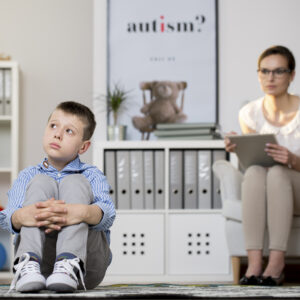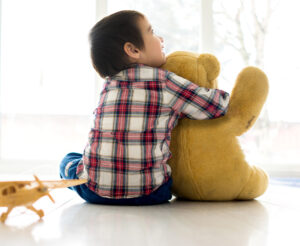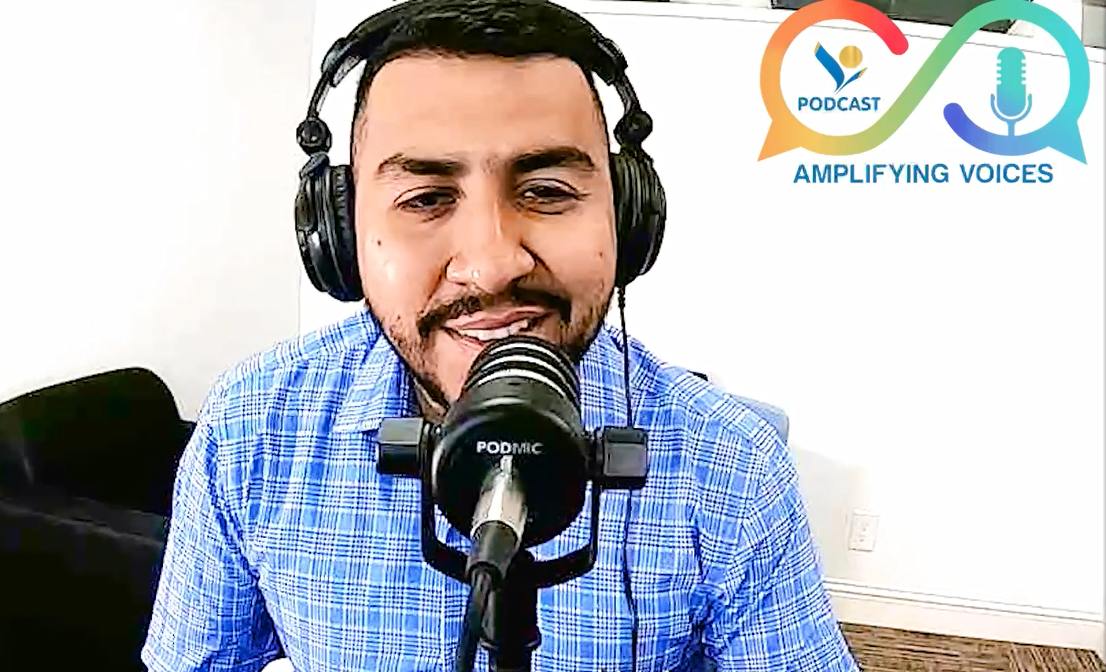
Autism
Autistic Spectrum Disorder (ASD) is a neurobiological developmental disorder that already manifests during the first three years of life and will last throughout the life cycle.
The fandamental symptoms of autism are two:
• Persistent deficiencies in communication and social interaction.
• Restrictive and repetitive patterns of behavior, interests, or activities.

Indications that may be indicative of ASD in children are:
- •In kindergarten and school, there is a lack of interest in other children.
- They do not share interests (they are not used to pointing the finger at what catches their attention to share it with others).
- Absence of symbolic play (feeding dolls, making little kitchens, playing cars as if they were real, etc.).
- Little eye contact is established and they do not observe the expression on the face of the interlocutor when together they are seeing something unusual. They are not used to making the social smile.
- Their language, if it exists, is literal (they don’t understand jokes, jokes, double meanings or metaphors).
- They avoid physical contact or they like it less. They are accustomed to having tactile, olfactory, gustatory and auditory hypersensitivity. There is often little sensitivity to pain.
- They react little to the voice of their parents, which can lead to suspicion of a hearing deficit.
- They have unusual interests. Also, they are repetitive and not shared.
- They can show strange, repetitive and self-stimulating behaviors such as rocking, flapping hands, or walking on tiptoe, among others.
- Those who have a higher intellectual level, notice that they are different and do not understand what is happening to them. They are the piece of the puzzle that does not know how to fit or fit on the social board.
ABA Therapy
It is important to look for scientific evidence that validates each treatment for children with autism. One of the models with the most scientific evidence in favor of its good results is the ABA-based therapeutic intervention model.
Applied Behavior Analyzes anticipates intensive training of its professionals to use complex procedures that allow teaching new skills and managing behavior. We can also hear references to the model as the Lovaas method, since this scientist has been one of the pioneers of the ABA in Los Angeles (1987). The principles of Behavior Analysis can be applied to analyze and modify behaviors to plan the teaching of different skills.
The bases of the ABA model in the treatment of autism are:
• Sessions structured in discrete attempts
• Programming of supports that are gradually withdrawn
• Use of effective enhancers
• Professionals with certified training
• Individualized intervention program
• Record of the evolution of the treatment
Autism Spectrum Disorder
(ASD) refers to a group of complex neurodevelopment disorders characterized by repetitive and characteristic patterns of behavior and difficulties with social communication and interaction.
The symptoms are present from early childhood and affect daily functioning. The term “spectrum” refers to the wide range of symptoms, skills, and levels of disability in functioning that can occur in people with ASD. Some children and adults with ASD are fully able to perform all activities of daily living while others require substantial support to perform basic activities.


The Diagnostic and Statistical Manual of Mental Disorders (DSM-5, published in 2013) includes Asperger syndrome, childhood disintegrative disorder, and pervasive developmental disorders not otherwise specified (PDD-NOS) as part of ASD rather than as separate disorders. A diagnosis of ASD includes an assessment of intellectual disability and language impairment. ASD occurs in every racial and ethnic group, and across all socioeconomic levels. However, boys are significantly more likely to develop ASD than girls.
The latest analysis from the Centers for Disease Control and Prevention estimates that 1 in 68 children have ASD.
Applied Behavior Analysis (ABA)
Applied Behavior Analysis (ABA) is a scientific discipline among the helping professions that focuses on the analysis, design, implementation, and evaluation of social and other environmental modifications to produce meaningful changes in human behavior. ABA includes the use of direct observation, measurement, and functional analysis of the relations between environment and behavior.


ABA is based on the fact that an individual’s behavior is determined by past and current environmental events in conjunction with organic variables such as their genetic endowment and physiological variables. Thus, when applied to autism spectrum disorder ASD, ABA focuses on treating the problems of the disorder by altering the individual’s social and learning environments.
The current guidelines are specific to ABA as a behavioral health treatment of ASD. Nevertheless, ABA has also been demonstrated as effective for treating the symptoms of a variety of conditions, including severe destructive behavior, substance abuse, dementia, pediatric feeding disorders, and traumatic brain injury, among others.
The successful remediation of core deficits of autism spectrum disorder ASD, and the development or restoration of abilities, documented in hundreds of peer-reviewed studies published over the past 50 years, has made ABA the standard of care for the treatment of ASD.
Autism Facts to Know
Amplifying Voice Podcast is a means of communication that connects us to the community. This is the first episode as we aim to raise awareness about ASD, learn more about ABA treatment, and be a resource for all families affected by autism. Oscar Silva is the professional with more than 10 years of experience in the clinical area as well as in the educational area, training more BCBA’s, he will tell us what ABA therapies are, what is the role of supervisors? What does a BCBA do? It will explain more about ASD and the most common characteristics. He will also tell us about how we can have these conversations with parents about these topics, in addition to explaining to new professionals in the area how families can be educated, so that they provide the necessary help to children diagnosed with ASD.

Español
Amplifying Voice Podcast, es un medio de comunicación que nos conecta a la comunidad. Este es el primer episodio tenemos como objetivo crear conciencia sobre el TEA, aprender más sobre el tratamiento ABA y ser un recurso para todas las familias afectadas por el autismo. Oscar Silva es el profesional con más de 10 años de experiencia en el área clínica como en el área educativa formando a mas BCBA´s, él nos dirá qué son las terapias ABA, ¿Cuál es el papel de los supervisores? ¿Qué hace un BCBA?, Nos explicará más sobre el TEA y las características más comunes. También nos hablará de cómo podemos tener estas conversaciones con los padres, sobre estos temas, además de explicarles a los nuevos profesionales en el área en cómo se puede educar a las familias, para que brinden la ayuda necesaria a los niños diagnosticados con TEA.
What is Autism?
Amplifying Voices is a podcast that connects the community and offers friendly conversations with inspiring people and professionals. In today’s episode, Marioly Gómez joins us. They are not going to tell what they do, and what their position is. We will talk about success stories and how progress is being shown in patients, and the importance of ABA therapies. Understand a child who perceives himself differently, learn about positive intervention and how technology is applied appropriately in a patient’s home. How to start the career to be a behavioral development professional and what the career of a behavioral technician is like.

Español
Amplifying Voices es un podcastque conecta a la comunidad y ofrece conversaciones amistosas con personas y profesionales inspiradoras. En el episodio de hoy, nos acompaña Marioly Gómez. Ellas no van a contar qué es lo que hacen, y cuál es su posición. Hablaremos de historias de éxito y cómo se van mostrando los avances en los pacientes, y la importancia de las terapias ABA. Entender a un niño que se autopersive diferente, conocer sobre la intervención positiva y cómo se aplica la tecnologia adecuadamente en casa de un paciente. Cómo empezar la carrera para ser un profesional en el desarrollo conductual y cómo es la carrera de un técnico del comportamiento.
